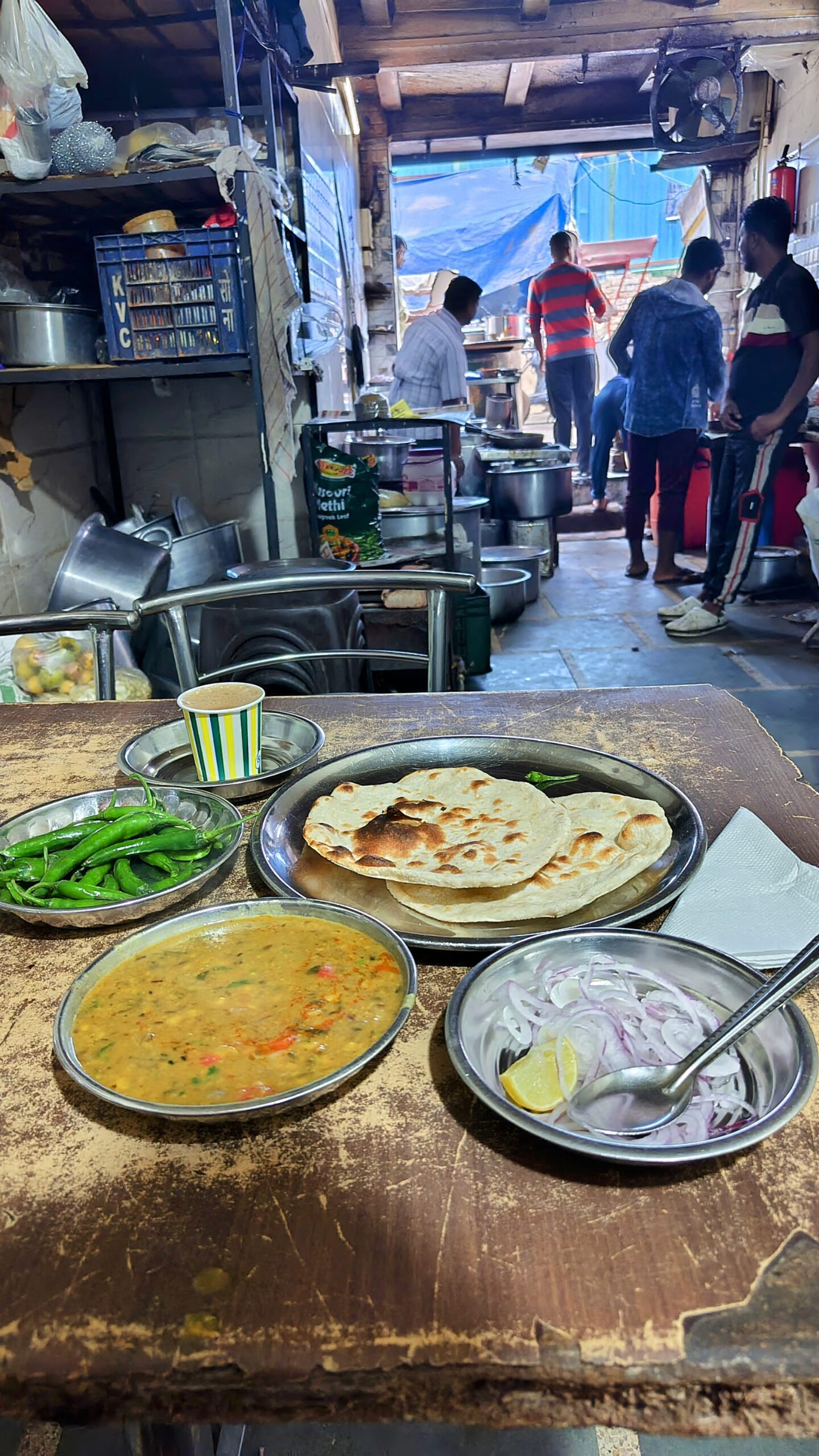From February to March 2024, I stayed in India for one month. In this article, I will guide you through whether there are foods other than curry, how much they cost, and dishes I recommend to those planning to visit India, based on my actual dining experiences.
I have already written separate articles about other Indian foods and drinks:
In this article, I will introduce foods and drinks other than Biryani, Chai, Lassi, and Mango Juice, along with information on the dining environment (street stalls, restaurants) where I actually ate them.
Please note that the prices and information in this article are based on the cost of living and exchange rates in February and March 2024.
Is Everything Curry?
On my first day in Delhi, I explored the area around my hotel looking for a place to eat. My first meal in India was at a storefront restaurant, not a street stall. I peered inside and was invited in. I wasn’t sure how to order, but when I said “Chapati, Masala Chai,” they understood, and the first photo shows what came out.
It was two chapatis, a curry sauce, green chilies, and raw onions. The way to eat it was to dip the chapati in the curry sauce, bite into the green chilies, and occasionally eat raw onion to cleanse the palate. This meal cost 70 rupees (approx. 126 yen).
After that, I ate almost all my meals at street stalls. I tried several types of food at the stalls, but I couldn’t figure out the specific dish names. It was usually a combination of some kind of bread, curry sauce, and a side dish, with prices ranging from 30 rupees (approx. 54 yen) to 50 rupees (approx. 90 yen).
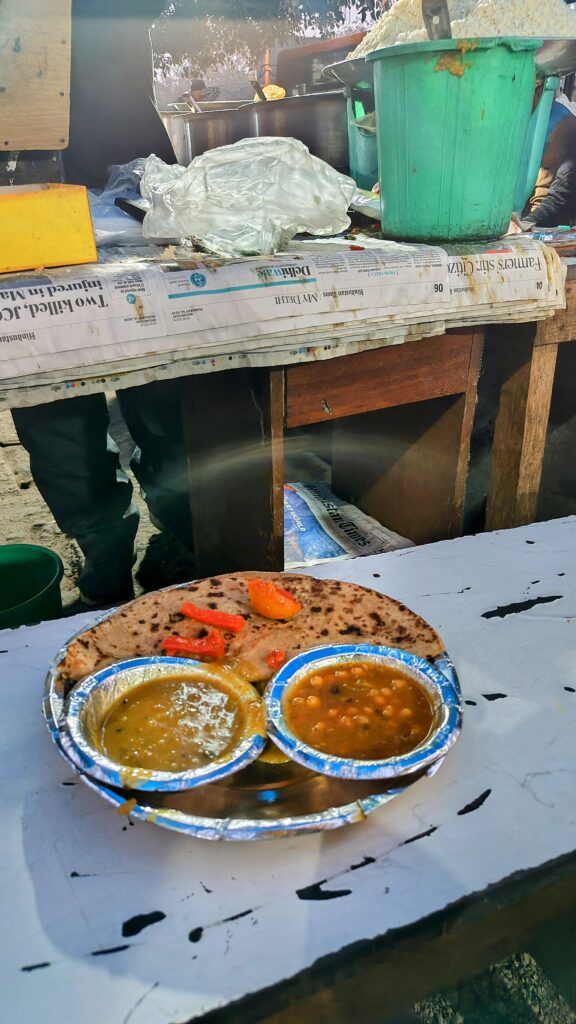
During my stay in Delhi, my daily food expenses, including chai for breakfast, lunch, and dinner, plus lassi for snacks, stayed within 200 yen. I have visited countries previously called the poorest in Asia, but even there, it cost around 500 yen per day. India is experiencing remarkable economic growth and is even said to eventually surpass Japan in GDP, so spending only 200 yen a day, even at street stalls, is astonishing.
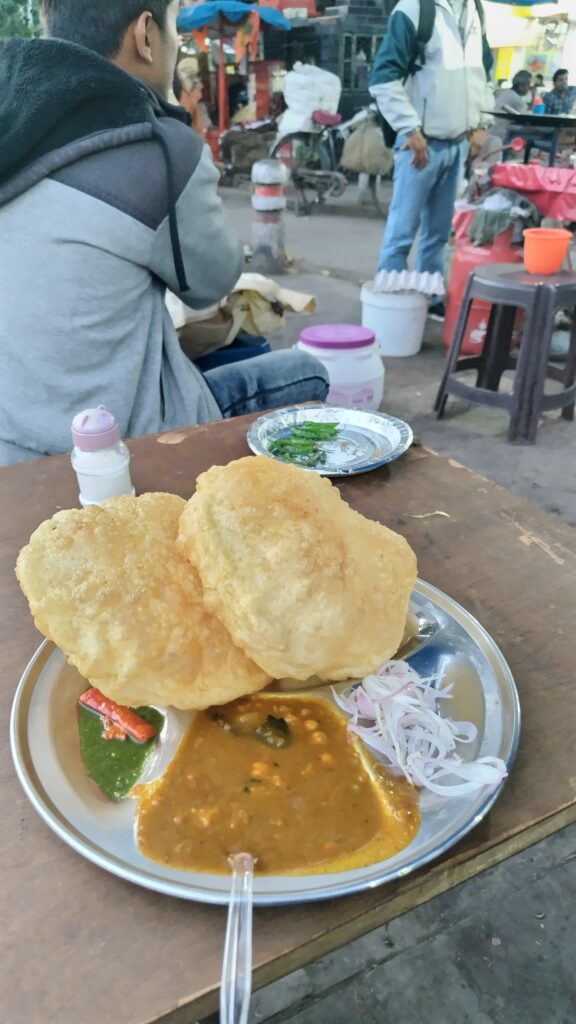
240222181746685
At dusk, many stalls were crowded with customers, suggesting that eating at street stalls is common. This likely means that average Delhi citizens live on such food expenses.
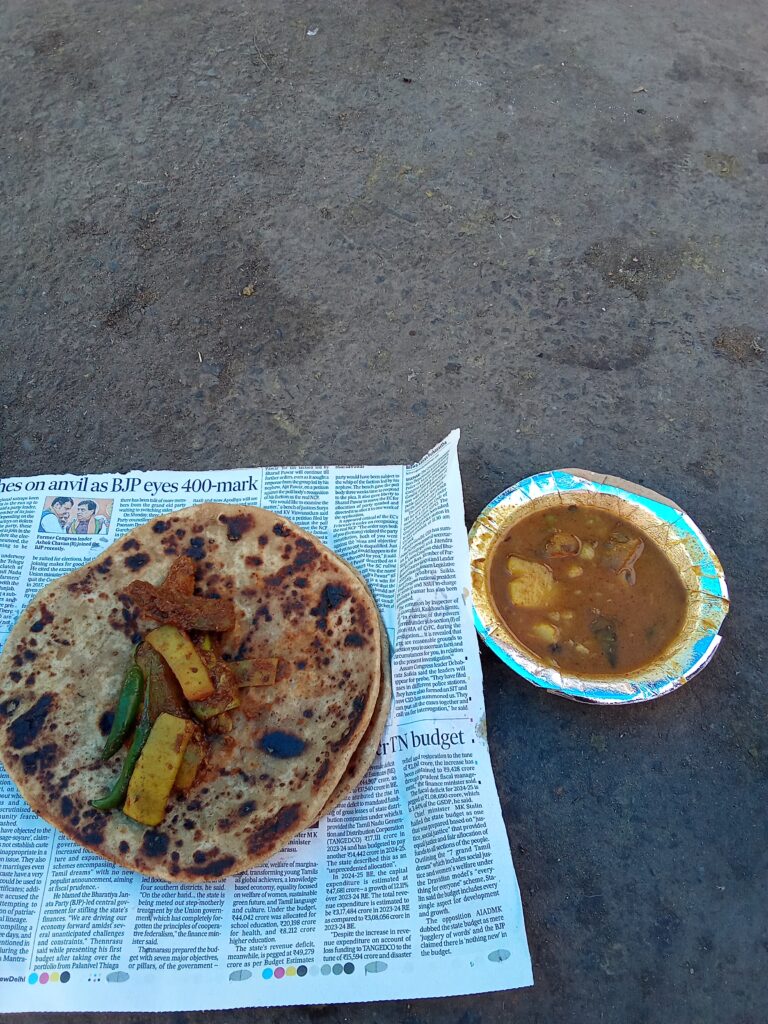
Besides street stalls, I also ate at open-air stands. Most chai shops were open-air stands, and customers would sit on the ground to eat and drink.
Naan is famous in Japan as an Indian food, but since naan is made by baking fermented dough in a tandoor oven, it cannot be offered at street stalls or open-air stands, so I didn’t have many opportunities to eat it. However, since I was in India, the home of naan, I decided to visit a naan specialty shop.
When it comes to naan, there were so many dishes on the menu with no pictures, so I had no idea what to order. I ordered by looking at the prices, and what was served was the dish in the left photo. I had expected the fluffy naan that I often ate at Indian restaurants in Japan, but what came out was a dense dough with ingredients stuffed inside, and the sauce was plain yogurt. I wonder how I should have ordered to get that fluffy naan. This naan cost a surprising 100 rupees. It was two to three times the price of a street food meal. I only ate naan once.
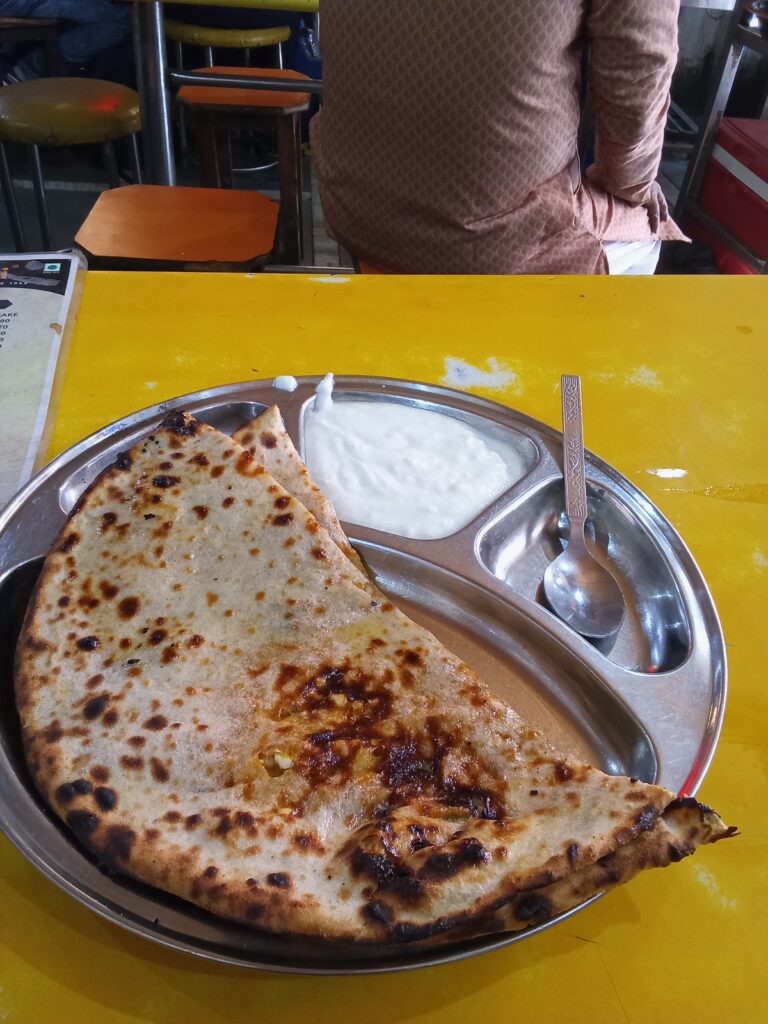
Towards the end of my two-week stay in Delhi, I often visited a standing street food stall. They had both rice and bread, and it was quite filling, yet it only cost 30 rupees. It was the best value for money!
Not just here, but at Indian eateries, if you run out of curry sauce, they will refill it for free. This is a delightful custom. Even if there are two types of sauce, they will refill both, and sometimes they’ll even give you pickled vegetables as a side dish.
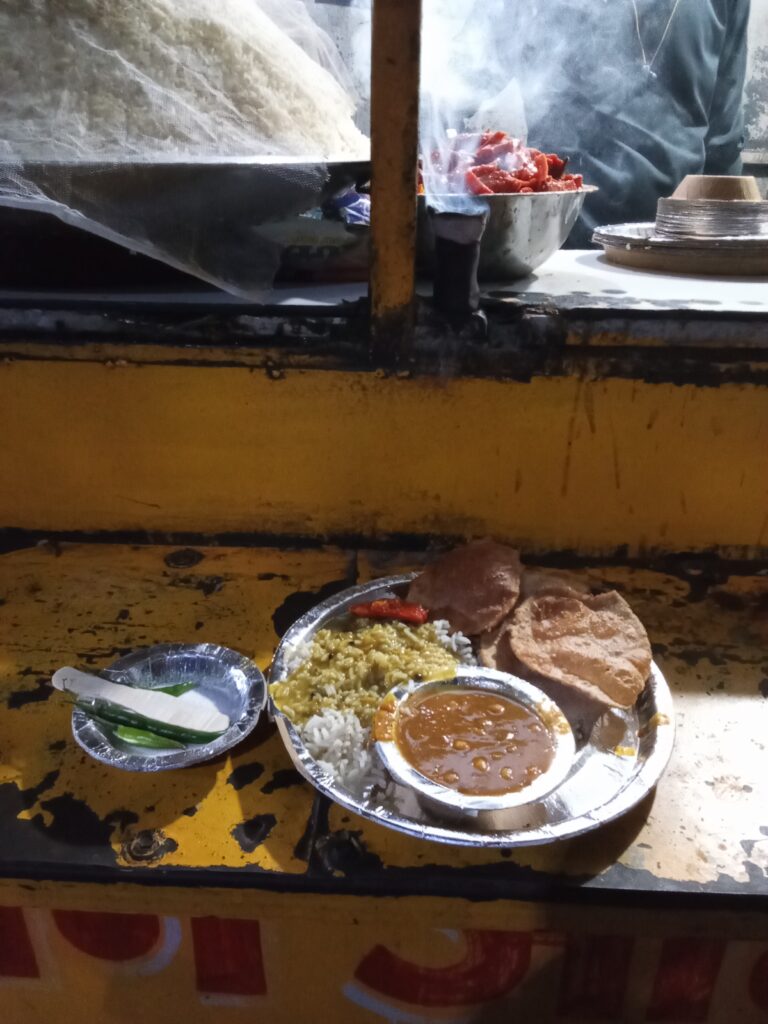
Other Dishes
Besides curry for meals, street stalls also sold snacks. For example, pies and samosas. In Japanese or Malaysian Indian neighborhoods, these often contain meat fillings like chicken pie or chicken samosa. However, in India itself, vegetarian dishes without meat were common. Pies were 20 rupees, and samosas were 10 rupees each.
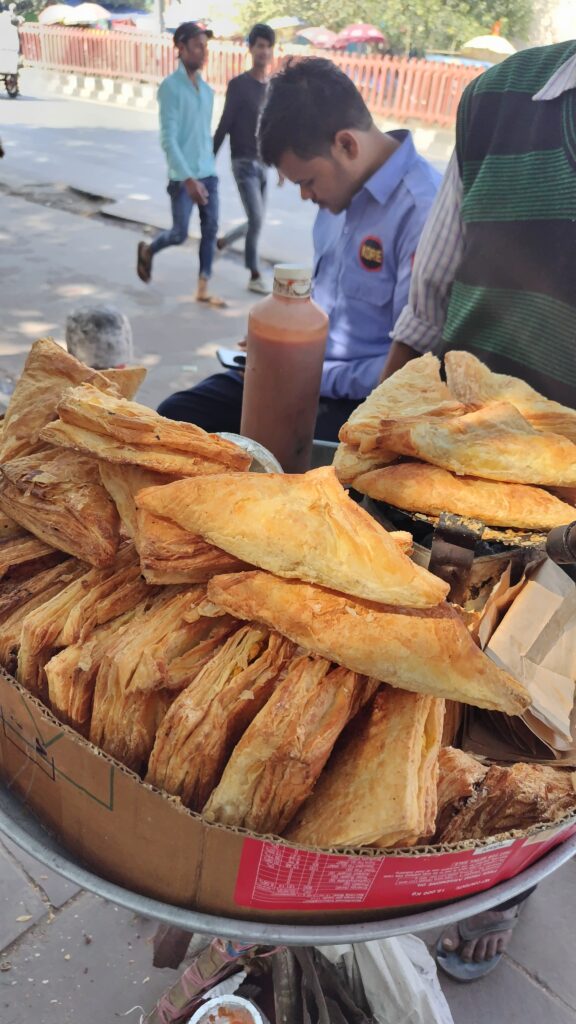
Previously, I might have felt that vegetarian dishes weren’t satisfying enough without meat. However, after actually living in India and eating vegetarian food, I found that potato-based samosas and similar dishes are quite delicious and filling. They’ve become a favorite of mine now.
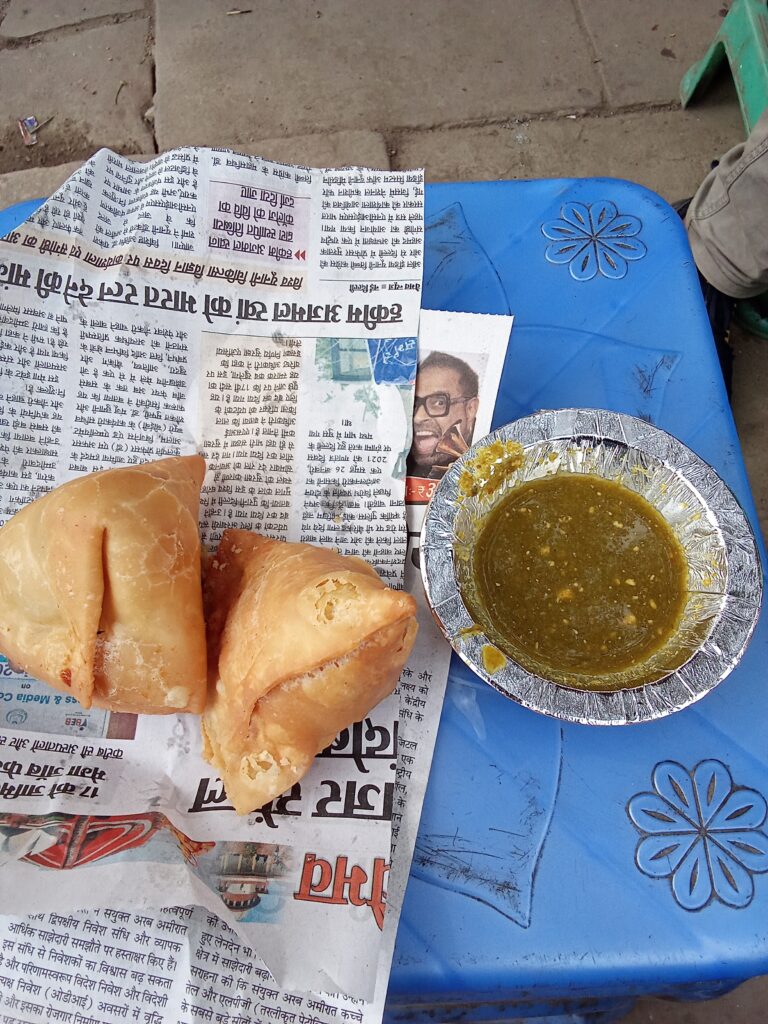
Additionally, next to lassi stalls, there were often fruit stalls or stalls selling freshly squeezed fruit juices. I tried fruit only once. I think it was watermelon and melon. However, perhaps because they had been cut and left out for a long time, the cut surfaces were dry, and the juice wasn’t sweet or very tasty. One plate cost 20 rupees.
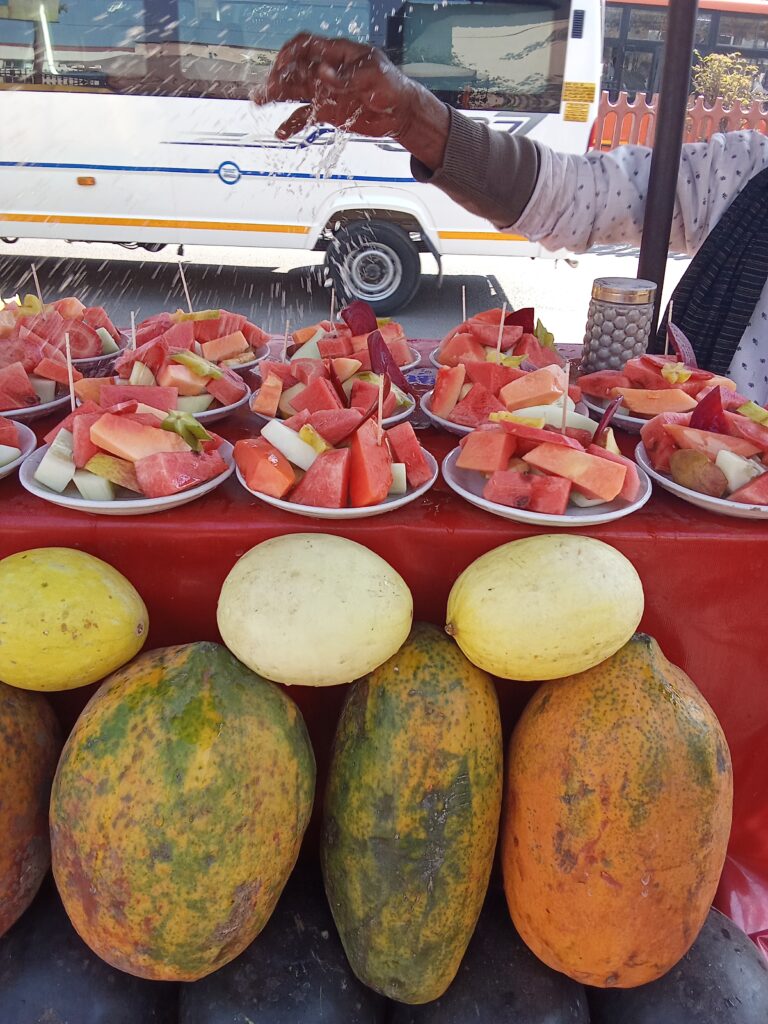
I have traveled to several countries abroad, but I believe Japanese vegetables and fruits are the best. I have never encountered vegetables or fruits that surpassed those I’ve eaten in Japan.
So far, that was about food in the capital, Delhi. When I came to Mumbai, there weren’t many street stalls. Apart from biryani stalls, I often bought food from stand-up shops in front of the station. They sold sandwich-burger-like items with samosas or tempura-like fillings in bread for 20 rupees.
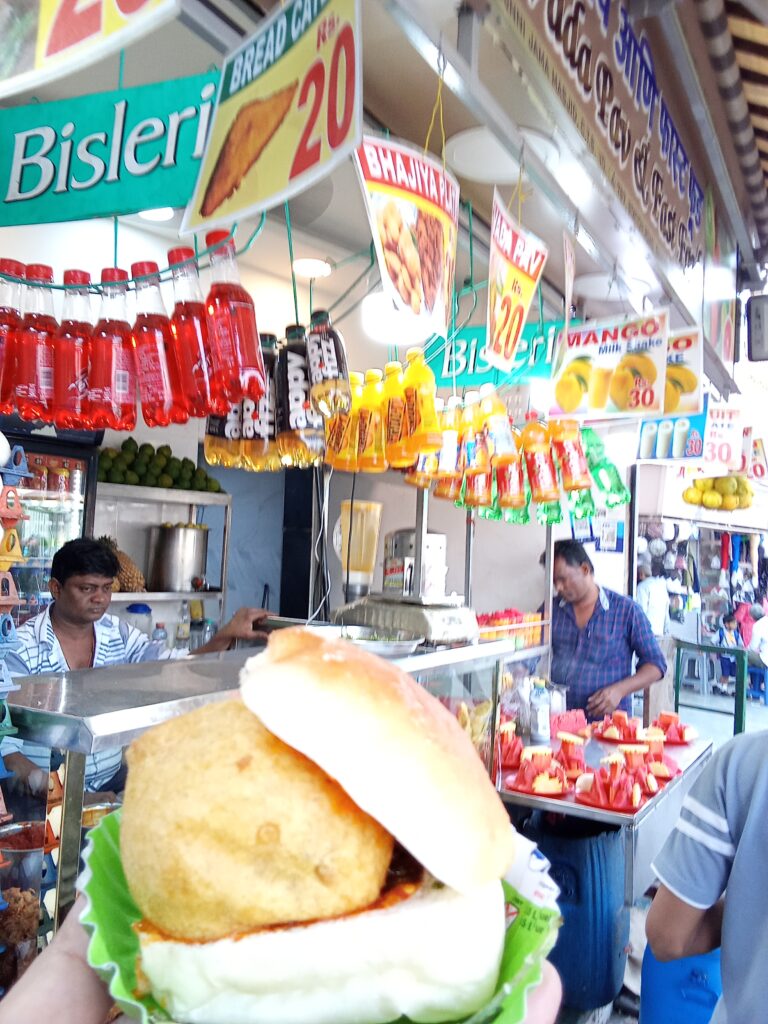
Among these, my absolute favorite became the omelet burger, which has a thin fried egg sandwiched in bread. The freshly made, warm burger was seasoned with salt and pepper and was incredibly delicious. What’s more, it cost only about 15 rupees (approx. 27 yen), offering the best value for money! I didn’t encounter this omelet burger in Delhi, but I found it at several shops in Mumbai.
If I go to India again, I will definitely look for the omelet burger. If you have the chance to visit India, please try to find it!

